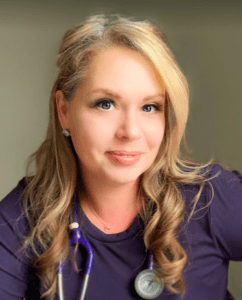As medical and technical advances improve patient care, a new concept is helping the millions of Americans affected by chronic and non-healing wounds. The idea is called Wound Center Without Walls (WCWW). It means providing wound care services outside the physical walls of a wound clinic.

An article published in 2020 in the Wounds journal introduced the idea of providing wound care services outside the traditional brick-and-mortar wound care center.
WCWW untethers wound care from a physical location. Rather, it uses technology and community-centered care to aggressively triage and provide care to patients with wounds.
This new model of providing care was developed in response to the disruptions in healthcare caused by the COVID-19 pandemic. Many patients could not get to their on-site wound clinic appointments due to closures, lock-downs, and fears about leaving home. One study suggested that outpatient wound clinic volume dropped 40% during spring 2020.
In fact, the U.S. experienced rapid telehealth adoption, with an 11,718% increase in telemedicine services among Medicare beneficiaries that year.
Following the pandemic, healthcare providers and patients have realized the value of virtual wound care services. These programs improve access to care and also address the needs of underserved or rural areas where wound specialists may not be available.
Wound care without walls aims to assess and treat patients where they live. This home-based monitoring and treatment strategy may lower risks and improve outcomes.
Telehealth has become an important tool in the management of chronic wounds. Today we have digital tools that are secure, efficient, and easy to use. Mobile apps let patients use their smartphones or tablets to take measurements and send wound images directly to their electronic medical records (EMRs).
Digital imaging tools also give providers more accurate measurements and assessments in many cases. Furthermore, using these tools to optimize wound treatment plans keeps patients and providers engaged.
In cases where a telemedicine consultation is needed, telemedicine providers can meet with patients virtually via video conference. What’s more, with real-time communication, nurses and doctors can even show and tell patients and families:
Telemedicine services are also giving patients treatment reminders and support along the way.
Patients need WCWW because the prevalence of chronic wounds and their healthcare costs are rising. A 2018 study of Medicare beneficiaries found about 8.2 million individuals with wounds.
A large recent study showed that nearly 15% of Medicare beneficiaries presented with a chronic wound or wound infection over a year. Furthermore, Medicare expenditures related to wound care are far greater than previously recognized, with care occurring largely in outpatient settings.
Wounds may result from diabetes, circulatory problems, or pressure injury. Open wounds increase a patient’s risk of infection and need emergency room visits or hospitalization. Specialized wound care treatment is essential to healing wounds quickly with less expense and pain and suffering to the patient.
In short, healthcare providers and patients will surely see an increase in wound care without walls programs. Patients and providers are becoming more comfortable connecting through digital tools, and payers support care that improves outcomes and lowers costs.
Talk with one of our expert doctors if you want to learn more about virtual services or wound care without walls. My Virtual Physician offers video consultations for diabetic, surgical, and other wounds.
Contact us now to find out how you can book your free or low-cost appointment for wound treatment.
Disclaimer: The contents of this article are for informational purposes only and do not constitute medical advice. The information, graphics, and images on this site are not intended to substitute diagnosis or treatment by a medical professional. Always seek the advice of a licensed physician for any questions you may have regarding a specific condition.
"An Economic Evaluation of the Impact, Cost, and Medicare Policy Implications of Chronic Nonhealing Wounds". pubmed.ncbi.nlm.nih.gov. Accessed July 2, 2022.
"Human Wounds and Its Burden". ncbi.nlm.nih.gov. Accessed July 2, 2022.
"Medicare Members Using Telehealth Grew 120 times". healthcaredive.com. Accessed July 2, 2022.
"Outpatient Wound Clinics During COVID-19". ncbi.nlm.nih.gov. Accessed July 2, 2022.
"Telehealth in Wound Care - Evidence and Best Practices". woundreference.com. Accessed July 2, 2022.
"Wound Center Without Walls". ncbi.nlm.nih.gov. Accessed July 2, 2022.
 Sarah Falcone, BSN, RN, WCN-C, CSWD-C, is a certified wound care nurse, nursing consultant, and health content writer in Fort Worth, TX. She works with clients in home health, wound care, and telemedicine. Sarah is a passionate advocate for moving advanced levels of care to the home, where her clients can safely receive the medical treatments they need with greater satisfaction and comfort. She focuses on patient experience, outcomes, and advancing clinical models using innovative technology to serve patients better. Sarah draws from 15 years of practicing patient care and nursing leadership to share her own nursing experiences and expertise online. Connect with her on LinkedIn!
Sarah Falcone, BSN, RN, WCN-C, CSWD-C, is a certified wound care nurse, nursing consultant, and health content writer in Fort Worth, TX. She works with clients in home health, wound care, and telemedicine. Sarah is a passionate advocate for moving advanced levels of care to the home, where her clients can safely receive the medical treatments they need with greater satisfaction and comfort. She focuses on patient experience, outcomes, and advancing clinical models using innovative technology to serve patients better. Sarah draws from 15 years of practicing patient care and nursing leadership to share her own nursing experiences and expertise online. Connect with her on LinkedIn!